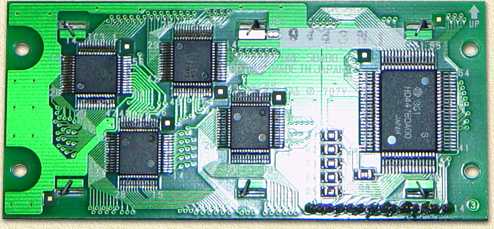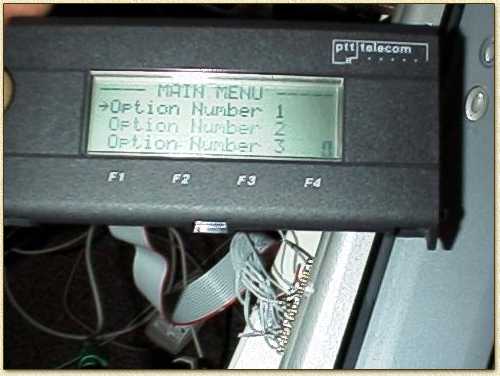
| Print this page - use Landscape |
Search the WeetHet Pages |
||||||||||||||||||||||||||||||||||||||||||||||||
| WeetHet is being updated! - Current articles will slowly move to www.tweaking4all.com For excellent webhosting that is reliable and affordable, we highly recommend: LiquidWeb |
|||||||||||||||||||||||||||||||||||||||||||||||||
|
On this page ...
The LCD display itself I started working on an LCD-panel-display, ... I found a broken desktopmodel phone (model Ericsson DBC661) with a very nice 20x4 display based on a Hitachi 44780 controller. Since the information on this display was pretty hard to find, it took me a while to get it working. I used information of Seiko, Optrex, Hitachi, some examples on the web from
Thanks to these people !! I also have to specially thank Seiko Instruments Germany for their excellent help and support !! Interfacing this display proved to be easy in DOS, however interaction between display-software and MP3-player was simply to hard... so a friend of mine (Saber Karmous) suggested using Linux. I have experience with Linux from my university-days, so I decided to give it a try. At first I tested the device-drive of Nils Faerber and Michael Engel, which did not work for the way I interfaced the CPU and the LCD. So I decided (with some help of Randy Rasa's DOS C-code) the rewrite the device driver, which worked pretty well to. Note: in the meanwhile a lot of tools support controlling an LCD panel in your PC, like WinAmp and MBM Monitor. Wiring the display This is the backside (componentside) of the display found in the Ericsson DBC661. On the right-bottom side you'll see 14 pins. Take a look at this PDF file for how to wire this. Below you will find a little table showing how to make the connections
It works ! After wiring the LCD to the parallelport I used Randy's
program to test the display in DOS,..
So it finally worked using a little piece of software
I wrote using Borland's Turbo Pascal for DOS (You
can download it here)... and after a while I got it working with Linux
aswell (download the device driver
and a test application here). The fun part is that Linux is a faster
OS than DOS, finally I got an MP3 application running aswell on an old
Pentium 75 Mhx machine (and those puppy's are reeealllllyyyyy slow)...
|
|||||||||||||||||||||||||||||||||||||||||||||||||



